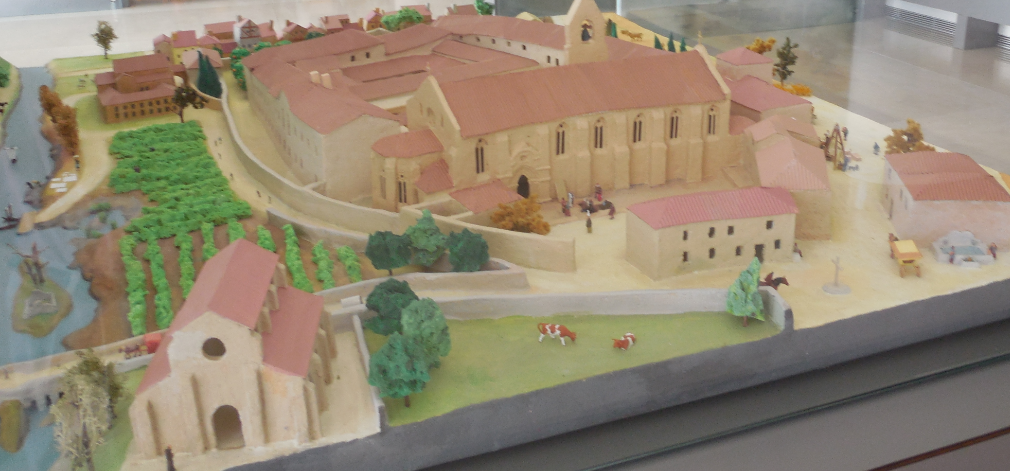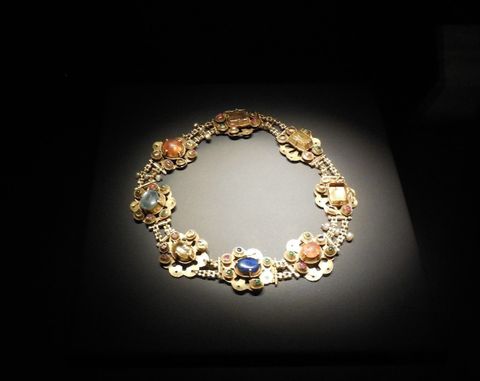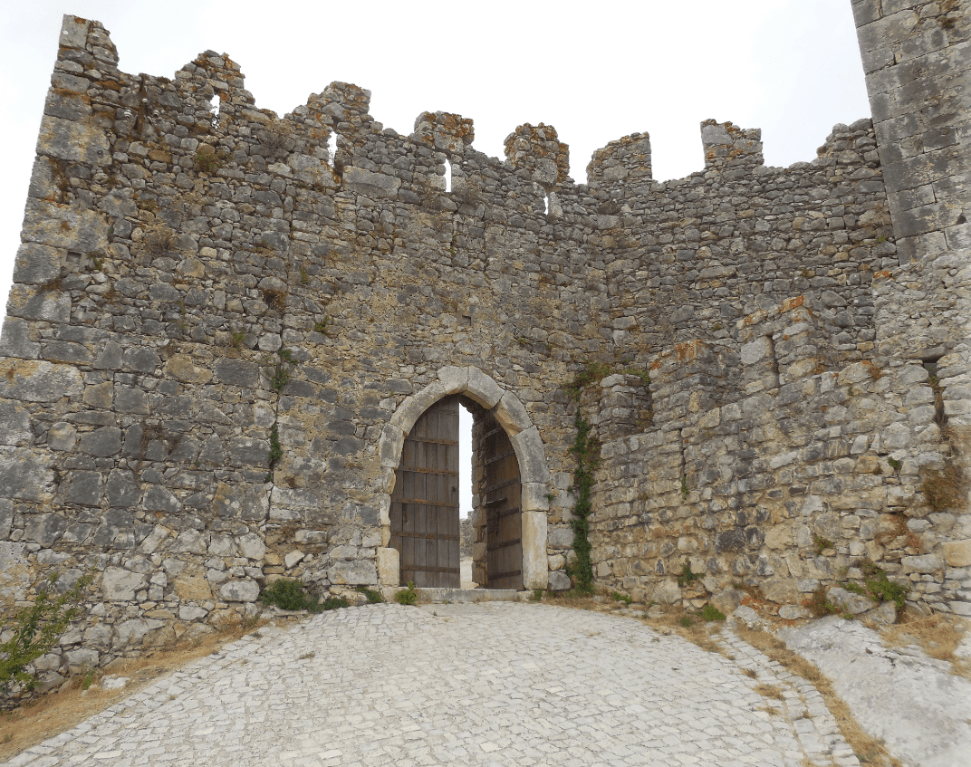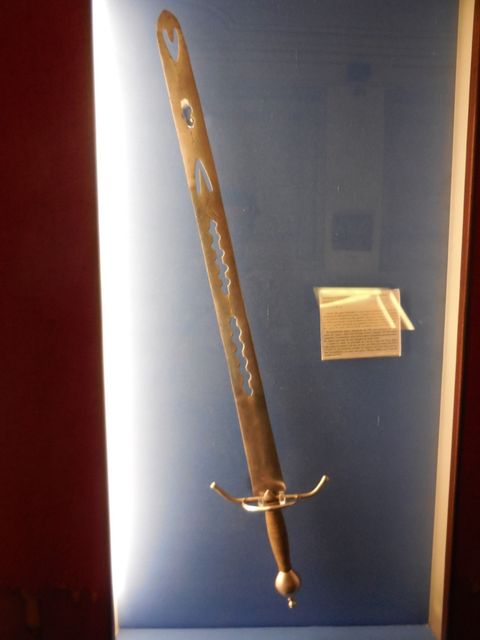Today the restoration of the original church and grounds continues. There is a delightful museum as you enter the grounds.
Nearby one can stay at the Quintas das Lágrimas with the Fontes dos Amores (Fountain of Love) retelling a version of the Pedro and Inês story.
Coimbra traces its origins back to a Roman town set on a hilltop. Pedro’s ancestor, Afonso I, made this city Portugal’s first capital in 1139 after defeating the Moors. The Mondego river splits the town with the novel’s setting found on the south banks of the river. You can easily walk across the bridge to the town that rises on a steep hill. Be sure to stop in a bake shop for an arrufada, a sweet bun created here. There is much to tour and you can imagine the city in times past. The University of Coimbra dates to 1290, the ninth oldest university in Europe. Nearby visit the Castro Museum. We loved this stone carved knight from the 14th century attributed to Master Pero.
Head west about 35 km/22 miles from the Santa Clara Convent to reach the Castelo Montemor-o-Velho. King Afonso rode from here to Coimbra. Inside these tall walls are lovely grounds with a chapel and parts of the original structure still in place. The stretches of green grass make an excellent place for a picnic. From the walls there is a commanding view over rice fields and countryside. On a July afternoon the air was scented with flowering trees of peaches and figs.







